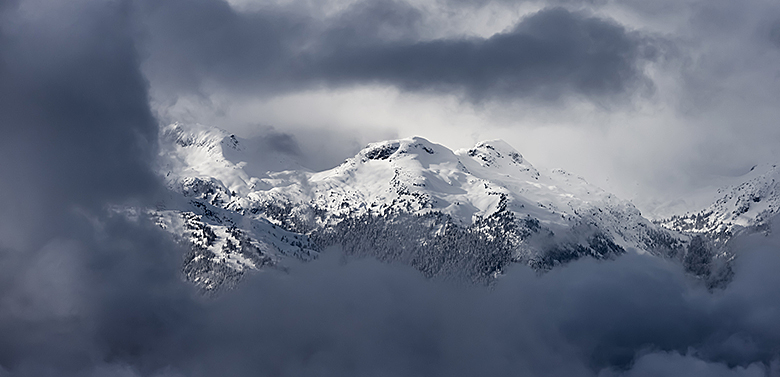Don’t Get Caught by the Cold
By Jason Blair, FAA Designated Pilot Examiner, ATP, CFII, MEII, AGI

Winter is here so it’s time to change our summer flying habits. Most pilots have read numerous articles about how to deal with icing or how to start their aircraft when it is cold out, but there are many other practical considerations that can make your winter flying experience more successful. Think about some of these before your next flight to avoid getting caught by the cold.
Think About Local Weather
Areas downwind of the Great Lakes are notorious for “lake effect snow,” resulting in localized, frequently heavy snow patterns and rapidly changing conditions. These conditions can last for minutes, hours or days and are difficult to predict. I have seen it go from sunny to blizzard in minutes. If you are traveling to an area that is subject to these conditions, get weather information frequently and from as close to your destination as possible. On a positive note, this weather is usually localized and you can typically divert easily to better weather without going very far.
When traveling to these or other areas that experience localized winter weather conditions, it is a good idea to review detailed radar and satellite imagery. A Flight Service briefing is important, but I always back that up by looking at imagery myself, as it helps build a mental picture of what is happening. You can access aviation-approved weather source data at www.aviationweather.gov.
Call Ahead
Many smaller airports (especially ones that don’t have towers or air-carrier service) are run by local municipalities or contracted FBO services. NOTAMs may not always be current. Important things such as closed taxiways, runway closures, snow-covered runways or equipment working on airport surfaces don’t always get reported. The best advice I can give is to call ahead. Calling the FBO or the local airport manager can provide valuable and important local information.
Plan Differently
Consider whether flying at night is a good idea or not. In many of the areas I fly, runway lights are just not tall enough to be seen above snow banks or sometimes, even the overall snow level. This means that runway lighting may be obstructed, or even buried from certain angles as you approach the airport. Finding a runway at night in winter can be difficult in those conditions.
Night flying in winter can eliminate some options. During the day, we can see and avoid snow squalls that, at night, we may not be able to see. Winter weather conditions require that you use different planning techniques. This also applies to the resources you use in planning. One good source is the NOAA Icing Forecast tool found on their website http://www.aviationweather.gov/adds/icing/icing_nav.php. This can help you plan the altitudes where you might encounter icing across your route of flight. In some cases, instead of flying around weather, you can plan altitudes to help avoid icing. Occasionally, flying at a lower altitude than you would during the summer allows you to fly safely and avoid potential icing.
Bring Warm Clothes
This advice may sound a bit “gee whiz,” but it comes from experience. I have been stuck on a cold ramp in my regular day-to-day office clothes too many times while I waited for a ride or cleared snow off my aircraft. I have tried to fuel my airplane at a frozen fuel pump at which the credit card machine was not working properly (no doubt because of the snow-filled card reader). Warm clothes are an important part of a pilot’s winter flying gear. Think hat, gloves, proper shoes or boots and a jacket.
Protect Your Plane
Just as you need to protect yourself with warm clothes, your plane may need protection from the elements. Too many pilots have reached their destination, parked their aircraft on the ramp and returned to find that they were unable to go back home because of winter’s effects. When you make that call ahead prior to your flight, a good question to always ask is whether a hangar is available for your stay. When traveling to airports where a hangar is not possible, many pilots have solved the dilemma by bringing wing covers or even tarps for the aircraft. If nothing else, bring a snow brush to get any loose snow off the wings. Remember, ice or snow that sticks to the aircraft surface must be removed for safe flight to continue.
These simple tips may seem like common sense but, in my experience, I’ve found that many pilots skip them during winter flying, too often with negative consequences. Take the time to plan ahead during winter operations and you can have a successful, and safe, winter flying season.
Jason Blair is an active single and multi-engine instructor and FAA Designated Pilot Examiner with 4,600 hours total time and 2,600 hours instruction given. He serves on several FAA/Industry aviation committees and is the past Executive Director of the National Association of Flight Instructors. He also consults on aviation training and regulatory efforts for the general aviation industry.
Reprinted with permission from Avemco. Articles and news items provided by Avemco are not intended to provide technical or legal advice. Content is for general information and discussion only and is not a full analysis of the matters presented. The information provided may not be applicable in all situations, and readers should always seek specific advice from the FAA and/or appropriate technical and legal experts before taking any action with respect to any matters discussed herein.



